How to Select and Install the Right Anchor Rode
While you're selecting your ground tackle and picking out the perfect anchor, you'll also need to select an anchor rode which is a good fit for your a boat and your sailing plans. Fortunately, there aren't as many options for a rode as there are types of anchors!
The size of the rode depends on the length and weight of your boat, and the length depends on the water depths in your cruising grounds. Choose rope and chain combinations by where you plan to sail and what ground tackle handling gear you have on your boat.
Let me make it easy for you by walking you through it step by step. to get to the right type and size anchor rode for your particular situation.
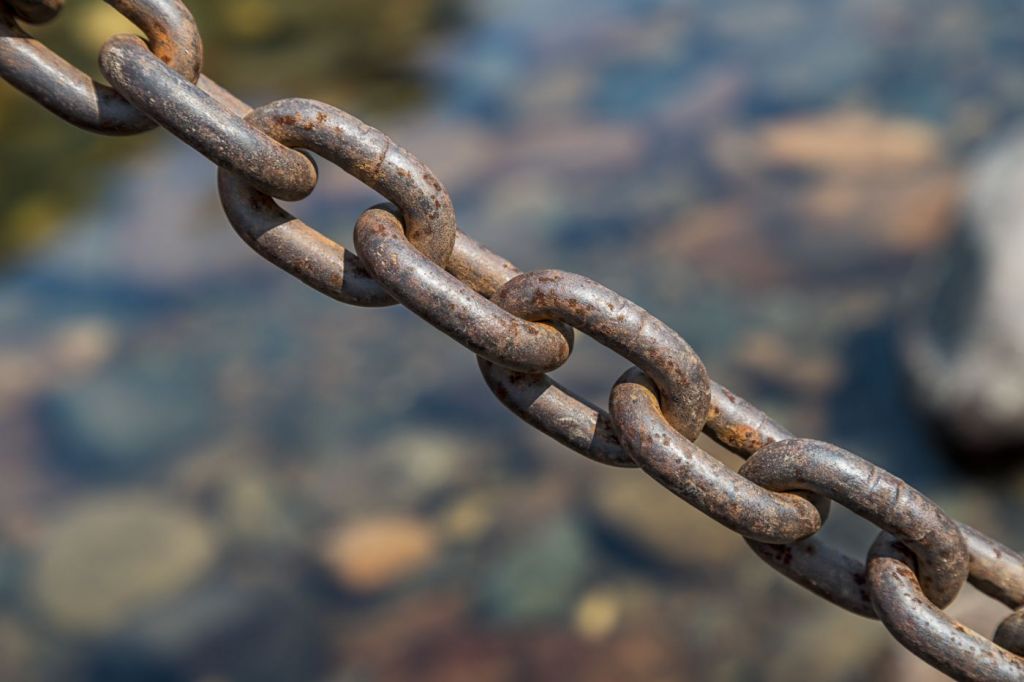
On this page:
The best rode for your boat depends on answers to these questions:
- Is my cruising location better with an all-chain rode, or a rope/chain combination?
- What is the proper size and type of chain and rope for my boat?
- What type of line should I use for a rode?
- How should my rode be put together?
- How long should my rode be?
The answers to these questions will take you to right rode for your boat. So let's look at them in more depth and come up with some answers.
What is a Rode?
An anchor rode connects the anchor to the boat. You may use rope or chain, but rope rodes will always have a length of chain on the end if they're going to be effective.
Its primary job is to hold the boat at anchor. To do this well, it needs to absorb shock loads as the boat moves, and have the working strength to hold the boat.
A rode may include line, chain, one or more shackles, seizing wire, and certain accessories like anchor swivels. It needs sufficient strength in all components to hold the boat when the breeze picks up. The adage that a chain is as strong as its weakest link applies to every piece of equipment in your rode.
Chain versus Rope/Chain?
The first decision to be made is whether an all chain rode is suitable for your boat, or if a rope/chain combination is better for you. Both types have advantages and disadvantages, and there are some applications where one type is definitely worse than the other.
Think about where you will anchor your boat, whether you have a windlass (manual or electric), and how often you plan to anchor.
All Chain Rodes
It's impossible to chafe an all chain road on rocks or coral. They can't be cut without power tools or any forces you're likely to encounter. A chain rode is much heavier than rope, which gives better holding power for a shorter scope. Chain gypsies in a windlass don't slip, and the chain shouldn’t jam or bind. These advantages make them very popular with world cruisers and people who anchor in the tropics.
But all chain rode is really heavy - the 100 meter, 12mm rode on our boat weighs 660 pounds. I can't get it on or off the boat easily when it's in the water, and it's impossible to move around by hand. Even on a smaller boat, a chain rode will outweigh rope. If you don't have an electric windlass, hauling anchor can be a back-breaking job.
That weight also affects a boat's trim - too much weight in the bow affects your sailing and can put a boat off her lines to float bow down. And chain offers no shock absorption, so you need snubber with lines to take shock loads from waves and wind as a boat moves.
Rope/Chain Rodes
The weight advantages are clear; you can easily carry even a large rope rode and move it around. If you don't have a windlass, or only have a manual one, line rodes are easier. Hauling chain is grueling work. And rope rodes have built in stretch and shock absorption.
There are downsides. You need a hefty length of chain before the anchor to add weight and protect the chain from rubbing on bottom hazards. Without the chain, you won't get a good angle of pull on the anchor and the anchor will pull right out.
Most coastal cruisers and racers prefer rope/chain rodes for their easy of handling and lightweight. You can get by without a windlass, and you can carry more length for deeper water without excessive weight.
About Chain
Chain comes in several grades and types of metal, as well as different link sizes and styles. You choose your chain based on how much load you need to hold, and if you have a windlass, by the size of your gypsy.
Types of Metal
Most anchor chain is galvanized steel. Some choose stainless because of its corrosion resistance and appearance, but it is considerably more expensive and may not have the same load capacity as some heat treated, galvanized chain.
Some grades include:
- High-test may be marked HT, G4, or HT4.
- Grade 70 HT is heat treated steel has about 20% higher working and breaking loads that grade 40. It is difficult to re-galvanize.
- Proof Coil is grade 40 low carbon steel with markings of PC, PC3 or sometimes G3.
- BBB is marked 3B or BBB and is a short link chain compared to PC or HT. It is also lower grade 30 low carbon steel.
Chain Sizing
Chain dimensions vary with link size and length and diameter of the rod used to make the link. Chain labeled as 3/8 inch is made from 3/8" diameter rod stock, but that says nothing about the size of the link. A link may be longer or shorter, and you will need to know the right size if you plan to use it with a gypsy.
For more details on chain sizing and construction, check out How to Measure Your Anchor Chain.
Line Rodes
Picking the line for your rode and the matching chain is a function of your boat size, budget, preferences. You've got a few options, but any of them will work well.
Types of line used in rodes
You have your choice of three strand nylon, double braid, or 8-plait rope. Each has strengths and weaknesses. If you have a windlass, it is critical that you check your instruction manual, since not all types of rope are compatible with all windlasses.
The best material for anchor rodes is nylon. It's strong and stretchy, rot-resistant, and it sinks, which helps the anchor hold. Cheaper polyethylene lines aren't suitable and often float. High modulus aramid lines are overkill for the job; they are very strong, but they are also expensive and have little stretch. So keep them in your running rigging where they belong.
Three-strand nylon is popular because it is less expensive, tough, easy to splice, has good elasticity for shock absorption, and it resists chafing. On the downside, it's stiff and tougher to coil and prone to tangling and taking up space. It's also not as strong as double braid, and may catch in a windlass more often.
Double braid is the strongest option, and is more flexible, easier to handle, and sturdier than three-strand. It also will flake and coil into less space for storage. But it is more difficult to splice to the chain and has less stretch and shock absorption.
8-Plait anchor rope is soft and easy to handle, and flakes to a compact size in the bow locker. It absorbs more water than the other lines, so it comes up heavier but falls into the locker nicely. 8-Plait is similar in strength three-strand, but weaker than double-braid. And it's less stretchy than three-strand, but may not feed through a windlass as easily.
Line sizing
The standard formula for line sizing is easy - add 1/8" of line diameter (or 3mm) per nine feet (a little under three meters) of the boat. And make sure you round up, it's better to be too strong than too weak..
So a 22' boat would use 3/8" line (22/9 = 2.444, round to 3 x 1/8"), a 45' boat needs 5/8" line, and a 50 footer requires 3/4".
You can always size upwards if you can handle and store the road, or if you have a heavier displacement boat for its length. A Tartan 27 (7,400 lbs.) is going to pull harder on the anchor rode than a 3,000 lb. Santa Cruz 27, so you should think about a tougher line for the Tartan.
Chain sizing and length
If you want good holding power and chafe protection, you need to add a length of chain to your rode. It's possible to get away without a chain for something like a stern anchor or an anchor you keep on your race boat only to meet a rule requirement. But none of those would be suitable for overnight stays on the boat or anything but short term anchoring in mild conditions.
For sizing the chain, use chain about 1/2 the diameter of the selected rope, rounded up. For length, the ideal minimum length is one boat length, but if you feel you can carry and haul more, then more chain is always better. The absolute bare minimum should be 10-15' on small boats, if you don't have space for more.
How Much Rode do I Need?
A good rule of thumb for rode length is at least eight times the maximum depth you expect to anchor in. That is the depth at high tide, not low tide. To get that number, have some knowledge of where you plan to cruise.
With a relatively restricted cruising range where know the waters, this is easier to estimate. Chesapeake Bay sailors, with an average depth of about twenty-four feet, rarely need more than 200' of line, and will almost always be anchoring with a lot less. But in New England, if you need to drop in thirty-five feet of water in Block Island's New Harbor, you'll use almost all of a 300' rope rode.
In theory, you can use less chain, but when sizing your rode it's better to have a too much than not enough. Too little, and you can't anchor where you want to. And if you are at the end of your rode and bad weather comes through, you have no way to secure yourself by letting out more scope.
Putting it All Together
No matter which rode you select, you're going to put it together, and put it on the boat so it stays in place. There are a few tricks to know to get a solid setup, and a few parts you will need.
Seizing is something you will use in either assembly. It's using stainless wire to wrap shackles up so they can not come undone. All shackles used from the anchor to the boat should be seized. We're going to repeat this instruction, because it's important, as we walk you through securing your anchor to the boat with the rode.
No matter your rode style, you’ll need at least one big shackle to attach the anchor. Pay close attention to working load - not all shackles are created equal! You do not want an undersized shackle, but big, strong, galvanized shackles aren’t as expensive as you think.
Selecting the right ground tackle
The rode and shackle are both part of the anchor's ground tackle. For help on selecting your ground tackle and sizing it appropriately, I recommend reading my detailed guide here.
Chain Rode
Your components, from boat to anchor:
Anchoring Ring in the bow locker, anchor rode strop, chain, (optional anchor swivel), shackle, anchor.
There should be a ring or other hard point in the chain locker to connect the bitter end of your chain. The rode strop is a piece of tough line, like Spectra or other high modulus line, long enough to reach from the locker up through the hole to the deck.
Connect the chain to the boat with line rather than a shackle through the ring and the last link in the chain. If you need to release the anchor and rode in an emergency, you can pull this line up to the deck and cut it with a knife. With a shackle, you'll need a hacksaw or angle grinder.
If you plan to use an anchor swivel, attach it to the far end of the chain as per the manufacturer's instructions.
Attach the anchor to the chain (or the swivel) with the shackle. The pin of the shackle should go through the chain, and the loop should go through the anchor shank. Seize the shackle.
Don't forget your snubber! If you have an all-chain rode, you will need a snubber - a length of anchor line attached to a chain hook. Take the load of the windlass with the snubber and tie it off on a cleat. Without a snubber, you have no shock absorption for loads the chain, and may damage your windlass.
Rope/Chain Rode
A rope/chain road will need to have the rope and chain attached to each other. You can do this with an eye splice at the end of the rope and a shackle (which you will seize!), or by splicing the rope to the chain.
Most prefer direct splicing where there is a windlass, as the splice is smaller and will flow through the windlass. Just be sure to check the splice from time to time to make sure it's not unraveling. If you don't want to do the splice yourself, get the rode from a rigger and have them splice it on for you, or put in the eye splice if that is your preference.
Tie the bitter end to the boat in the anchor locker to an attachment point there, and attach the end of the chain to the with a shackle anchor and seize it.
Mark Your Rode
When you're setting your anchor, it's handy to know how much rode you've put out. Taking an hour or two to mark your rode takes out the guesswork.
You can use paint, chain markers, nylon tags, and even spinnaker cloth. Look at How to Mark and Measure Anchor Chain and Rode for a few ideas.
Did you find the answer to your specific question?
👍 0 👎 4
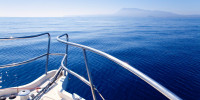
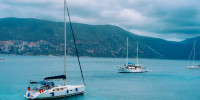
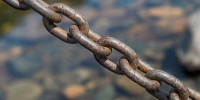
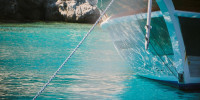
Leave a comment